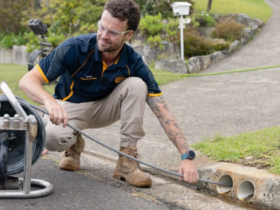Living with PTSD can feel like carrying an invisible weight. And if you’re dealing with PTSD yourself or know someone who does, you might know that there is no one-size-fits-all solution. The path can certainly be traditional therapy, but what if a mix of therapies could create an even bigger difference?
That’s the reason behind a multi-therapy approach: not to hang everything on one form of treatment, but to make various methods work together to offer people a larger toolkit for symptom management. Let’s dive into what this means, why it works, and how it might change lives – maybe even yours.
Precisely, What is PTSD?
First off, let’s get on the same page: PTSD stands for Post-Traumatic Stress Disorder. It can develop after someone has experienced an ordeal, such as combat duty, a serious accident, a natural disaster, or a personal attack. The symptoms of PTSD vary from person to person, but common ones include flashbacks, intense anxiety, nightmares, and feeling constantly on edge. Just imagine continually replaying your worst memory – it’s no wonder PTSD can make daily life difficult.
Traditional Therapies: Why One May Not Suffice
If you’ve ever searched for PTSD treatments, chances are that either Cognitive Behavioral Therapy (CBT) or Exposure Therapy has come up. These are both fairly standard methods that can work wonders for some. For instance, CBT allows people to change their thought patterns, while in Exposure Therapy, patients are made to face their fears directly but in a controlled environment. While both can be quite effective, there is often a limit to such forms of treatment. Sometimes, they only address symptoms or don’t truly get to the root of one’s distress. That’s where the addition of different therapies comes in.
Why a Multi-Therapy Approach?
Think of it like this: if someone wanted to get in peak shape, they wouldn’t just lift weights – they’d probably add some cardio, stretching, and maybe even a little yoga. It works the same way with a multi-therapy approach: it’s about “attacking” PTSD from different angles. An encompassing strategy can touch on all the facets of the disorder, addressing the mental, emotional, and even physical symptoms that often accompany it.
A whole-person approach avoids reducing symptoms to specifics. By layering various therapies, people may find greater relief and improved resilience over time. It can be personalized – think of it as a buffet of therapies – where you pick what feels right for you.
The Elements of a Multi-Therapy Strategy
So, how does this look in practice? Here are common components in a multi-therapy plan for PTSD:
Common Psychotherapy Techniques
- Cognitive Processing Therapy (CPT): Going deeper than CBT, CPT helps individuals process their trauma and reshape their understanding of the traumatic event.
- Eye Movement Desensitization and Reprocessing (EMDR): EMDR might sound a bit strange at first, but for some people, it’s incredibly effective. This type of therapy uses guided eye movements to help “reprocess” traumatic memories.
- Narrative Exposure Therapy (NET): Patients recount their traumatic memories in a storytelling style, allowing them to add structure to the events and feel more in control of them.
Complementary Therapies
In addition to talk therapy and cognitive techniques, a few less conventional therapies can be added:
- Mindfulness and Meditation: These practices teach people to be present, helping them break the cycle of reliving traumatic moments. It only takes a few minutes each day to make a difference.
- Yoga and Somatic Experiencing: Trauma can be stored in the body, so movement-based therapies like yoga can naturally release built-up tension. Somatic Experiencing focuses on bodily sensations, helping people process emotions they can’t find words for.
- Art and Music Therapy: Whether it’s painting or writing songs, creative outlets provide a way to release emotions that might otherwise stay locked up. It’s less about the end product and more about expressing emotions.
Medication as a Supporting Player
Medication isn’t always the first choice, but for some, it can be a game-changer. Certain antidepressants or anti-anxiety medications can ease PTSD symptoms, making it easier to engage in other therapies. And there are newer options on the horizon, too, such as medical marijuana.
Now, some states – like Kentucky – recognize medical marijuana as a treatment for specific conditions, including PTSD. Kentucky residents may consider applying for a Kentucky medical card online if they believe this treatment could be beneficial as part of their therapy plan. The application process, under a doctor’s guidance, may permit access to medical marijuana as a complementary treatment. This approach isn’t about masking symptoms but adding one more piece to the puzzle.
How Does a Multi-Therapy Approach Help?
So why does this combination work? A multi-therapy approach brings more balance overall. PTSD affects people in various ways, so it makes sense to address it with a range of tools. For example, talk therapy might help someone process their thoughts, while yoga provides an outlet for pent-up stress. Mindfulness can calm the mind when it begins to spiral, and medication can step in when symptoms feel overwhelming.
Each therapy plays a unique role, contributing to a fuller sense of wellness. It’s about building a support system within oneself, with each approach providing stability from a different direction.
How to Begin a Multi-Therapy Plan
If the idea of a multi-therapy approach appeals to you, where should you start? It’s as simple as discussing this with your doctor or therapist. They can help you design a plan tailored to your needs and comfort levels. A multi-therapy plan isn’t set in stone – it can change over time according to what works and what doesn’t.
Open communication with your healthcare provider is key. They may advise starting with a core therapy, like CBT, and then building in supplementary techniques as you progress. It’s all about finding the right fit for you.
Potential Barriers (And How to Overcome Them)
Of course, like anything, a multi-therapy approach isn’t without challenges. Access can be a significant hurdle. Not everyone has access to multiple types of therapy, especially in more rural areas. Then, there’s the question of insurance. Some complementary therapies, such as yoga or art therapy, may not be covered, adding an extra financial burden.
But there are ways around these obstacles. Some clinics and nonprofits offer sliding scale fees or group sessions to make these therapies more accessible. Many therapists are also open to exploring creative solutions to help their patients get the most out of treatment.
Why a Multi-Therapy Approach is Worth Considering
Looking at the benefits, it’s clear that a multi-therapy approach is more than just a set of techniques – it’s a strategy to help people take control of their lives, piece by piece. For many with PTSD, this can be a huge success.
Imagine waking up in the morning with tools you can rely on, knowing not only how to get through the day but also how you’re actively healing your mental health. Long-term, a multi-therapy approach can help reduce PTSD symptoms, enhance resilience, and improve the quality of life.
Final Thoughts
PTSD is tough, but that doesn’t mean you have to face it alone or with just one type of treatment. By combining therapies, you’re giving yourself multiple ways to manage, heal, and grow. If you or someone you know is struggling with PTSD, consider reaching out to explore these options. Taking the first step can feel daunting, but the journey to feeling better is often made easier with various support systems in place. Whether through talk therapy, movement, or even medication, there is a way forward – and perhaps this multi-therapy approach is it.
For More Information Visit Walkermagazine

















Leave a Reply